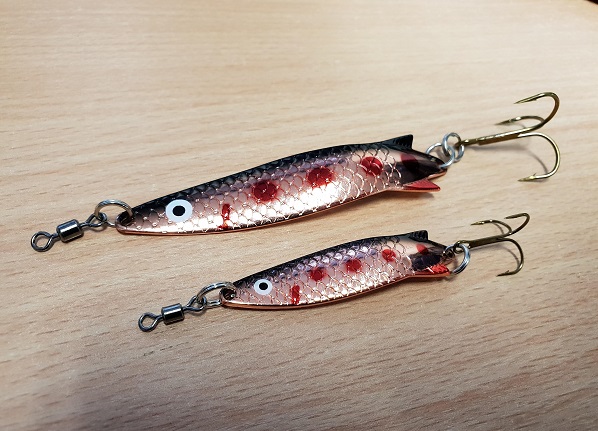Sometimes it happens, sometimes it doesn’t. But late August and September fry start loitering in the margins close to structure, such as rocky dam walls or weed beds. It’s a mystery as to why the fry feeding frenzy doesn’t always happen. Perhaps the fish have filled up on daphnia throughout the summer and just aren’t hungry? Who knows? But make no mistake about it. If you can time things right – and the fish are on fry – then you’re in for some of the most exciting sport of the year, with big fish aplenty. Early morning offers the best chance of success but sport can be enjoyed throughout the day. But remember that the back end of summer/early autumn is your best chance of tempting a season-topping trout. Fry-feeders tend to feed in spurts because they quickly become full on such large prey.

The important thing is that you are ready, armed with strong tackle, floating or intermediate line with at least 8lb leader, preferably 10lb. Patterns include Floating Fry, Stickleback Fry or Fry Booby or anything that looks like a small fish. Fry time is the most visually appealing time of the stillwater season with huge trout crashing into the fry shoals as they hunt. Rainbows have been known to herd the fish by hunting in packs then surging into the shoals, smacking them with their tails then returning to hoover up the stunned fry. Set-ups are usually single patterns to avoid double hook-ups, which are a common problem, usually resulting in a broken leader. Go catch a fry feeder!

Single Pattern Setups Are Recommended To Stop The Possibility Of Double Hook Ups
Here is our top fry bashing tips:
1. Understand What The Fish Are Targeting
As stated above, do your homework first. Find out what the trout are feeding on, depending on the waters you’re fishing, usually you will find it will be minnows, perch fry, roach fry or even trout fry. Check the margins and any surrounding structure to find out what fry are present.
2. Floating Vs Sinking Fry Patterns
The two main ways to target fry feeders are fishing for them off the surface with floating fry, or beneath the surface with sinking patterns.
Check for activity on the surface, the top of the water will literally be boiling with trout crashing into fry. Small fish can be seen jumping clear of the water in an attempt to escape the feeding frenzy, this is a good time to use a floating fry imitation. Cast your fly into the commotion, let it settle and then draw the fly away erratically while pausing the retrieve, allowing it to create disturbance across the surface, this will mimic an injured fry is trying to escape. Hold on tight! As trout will often see this as an easy meal opportunity.
- Perch Floating Fry
- Olive Fry Booby
When there is no evidence of surface action your best bet is to fish a sinking fry pattern. Keep the retrieve sporadic. Experiment with fast and short pulls on the retrieve and don’t forget to pause the retrieve – after all, we’re trying to imitate an injured or wounded fish.
- Fry Suspender
- Pin Fry
3. Fish Around Structure
Fry congregate around structure, it provides safety and security from predators but it also provides a source of food. Small insect life, algae and other small invertebrates can be found around structure, so locating these areas are important as this provides the main food source for fry. Look for Boat moorings, jetties, buoy ropes, weed beds or dam walls will all hold fry, these areas also make great ambush points for trout.
If there is a lack of structure on the waters you fish, the margins are a great place to start.
We hope this article has given you a good insight to fishing fry imitations, if you require any further help, please don’t hesitate to contact the Angling Active team. We are more than happy to help and discuss various techniques and tactics.











